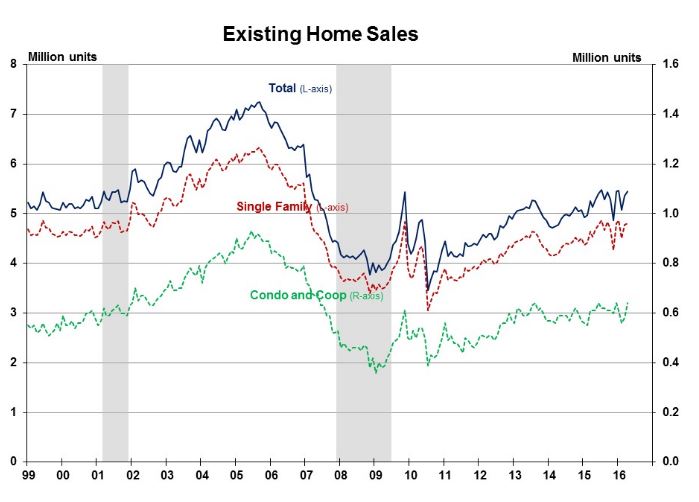 April marked the 44th straight month of tight supply in the existing-home sales space, according to the National Association of Realtors April 2016 Existing-Home Sales report released on Friday.
April marked the 44th straight month of tight supply in the existing-home sales space, according to the National Association of Realtors April 2016 Existing-Home Sales report released on Friday.
Corresponding with that tight supply has been a decline in distressed inventory (foreclosed homes and short sales, which typically sell at deep discounts). According to the NAR data, however, individual investors are still active in buying residential properties.
The share of existing residential homes sold in April that were distressed fell to 7 percent, down from 8 percent in March and from 10 percent over-the-year. Foreclosures and REO properties accounted for 5 percent of distressed sales in April, while short sales accounted for 2 percent.
“REO sales tend to have higher cash sales because of their discounted price and greater investor interest,” said Frank Nothaft, Chief Economist with CoreLogic. “As the foreclosure rate and REO sales share has fallen, that has helped to reduce the cash sales share. We expect the cash sales share in 2016 to be the lowest since 2008.”
The average discount on a foreclosed property rose from 16 percent in March up to 17 percent in April while the amount short sales were discounted stayed flat over-the-month in April at 10 percent.
The share of properties purchased through all-cash transactions continues to decline and is now reaching pre-crisis levels. The cash sales share, according to NAR, declined over-the-month by 1 percentage point but stayed flat over-the-year at 24 percent.
Despite the cash sales decline, individual investors are still buying up homes. The share purchased by individual investors (who account for many of the cash sales) in April was 13 percent, down over-the-month by one percentage point, according to NAR. In April, 69 percent of investors paid cash for a home.
Also in April, according to the National Association of Home Builders (NAHB), the individual investor share continued a four-year pattern of increasing at the beginning of the year but then declining by spring.
“One theory is that people that need to move school children, families that need a larger home, and people with new jobs tend to rush into the market a little later in the spring,” said Stephen Melman, Director of Economic Services with NAHB. “That’s when more buyers go in that are going to be using the home as a principal residence. So they pull a bigger share at that point, and that’s why the investor share goes down. We think slowly over time the investor share seems to be going down, and that seems to suggest a curing housing market.”
Overall, the pace of existing-home sales was up by 1.7 percent over-the-month up to an annual rate of 5.45 million despite the challenges presented by the ongoing inventory issues.
“We’ve now seen 44 straight months of tight supply,” Realtor.com Chief Economist Jonathan Smoke said. “In these conditions, home values have strong support, but potential buyers will continue to face challenges finding a home for sale that meets their needs. The biggest challenge to prospective buyers is tight supply, and that’s why we’re seeing the age of inventory drop dramatically. At the same time, we estimate that sales to first-time buyers are up 11 percent so far this year, and they comprise the largest source of this year’s growth in sales.”


 DSNews The homepage of the servicing industry
DSNews The homepage of the servicing industry










